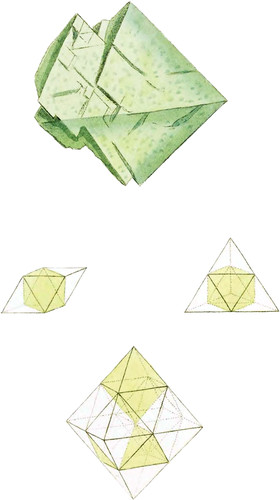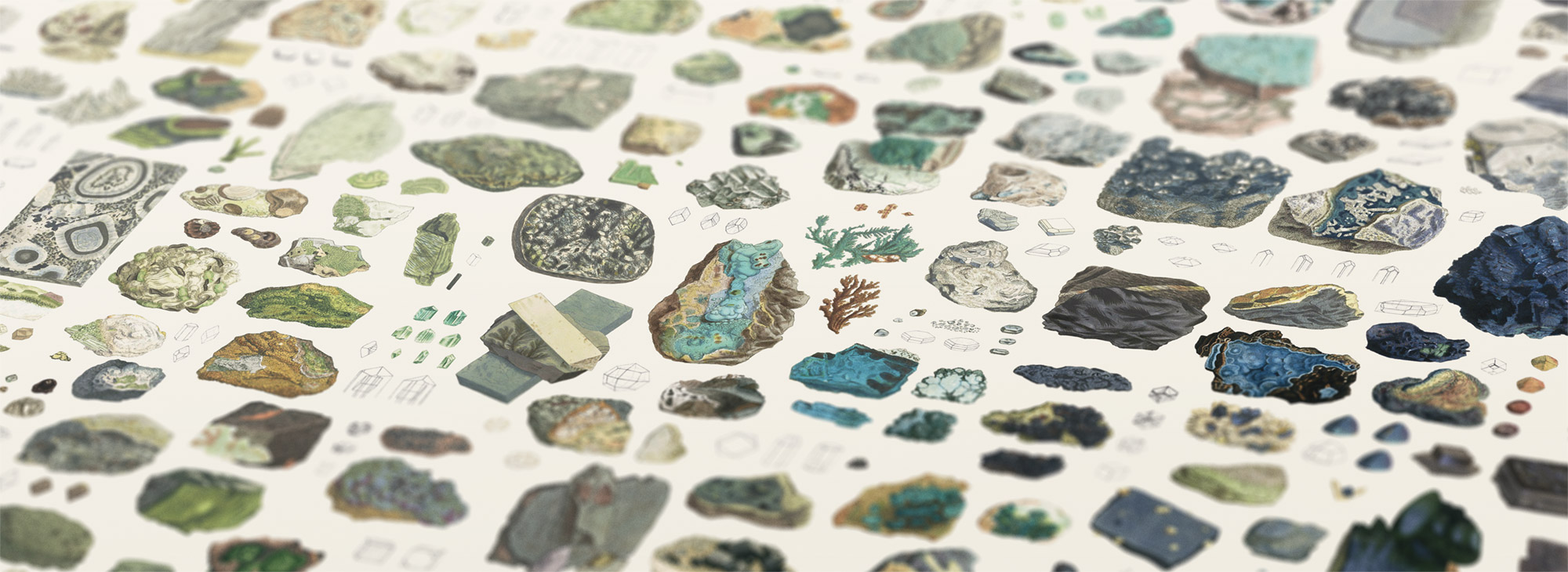 Enlarge
Enlarge
British Mineralogy
Primitive crystallized Fluate of Lime
- Class 2. Earth.
- Ord. 1. Homogeneous.
- Gen. 1. Lime.
- Spec. 4. Fluate of Lime.
- Div. 1. Crystallized.
- Syn. Rashleigh, 1. tab. 24. f. 2.
The upper figure here represented seems very nearly allied to the green fluor in the hornstone mentioned at tab. 26. Mr. Rashleigh’s, which must by the figure have been a very fine specimen, was elegantly formed among long columns of quartz, and came from the Pell mine, St. Agnes, Cornwall, where I understand my own was found. it is a rarity, as Mr. Rashleigh observes, and I am therefore happy to represent it here. It has no matrix, and appears to have been joined to a larger mass of its own substance, the fragments of which remain with it, and serve to show that the ruder parts have a tendency to the octaëdral figure. A remarkable circumstance belonging to this and the green part of the fluor, from Beer Alston, is: that on the hot poker it gives a blue green glow nearly like itself, but lighter from its brightness and somewhat more blue, very nearly resembling the chlorophane of Siberia mentioned at tab. xi.
The lower representations are designed to show the nature of the crystallization, which at first appears as if it has rectangular octaëdron for the primitive and integrant molecule: but on examining the fracture carefully, we find signs of many forms, and can produce fragments truly tetraëdral and rhomboidal; the former of which assists to form the octaëdral; and (vice versa) one octaëdron with four tetraëdrons forms a tetraëdron placed as in the right-hand figure. An octaëdron requires 9 octaëdrons and 8 tetraëdrons to form it, as in the lowest figure. The rhomb, which might be taken for the primitive, is composed of one octaëdron and two tetraëdrons, as in the left-hand figure. An octaëdron is tinted in each to make it more apparent, and the lowest figure has also a tetraëdron coloured. The fracture in fluor is very distinct from that of carbonate of lime, and is parallel to the faces of the octaëdron, each plate having always one hexangualr face, sometimes 2, forming altogether a flat octaëdron, like the bottom half of the left-hand figure in plate xxvi. Perhaps fluor fractures into more natural varieties of figures than any other mineral substance. However, as the octaëdron is always to be found in it, and is included most simply in the tetraëdron, the latter may be called the integrant molecule, and the former the primitive crystal. I do not know that the tetraëdron or rhomb has ever been obtained, except by means of fracture.

